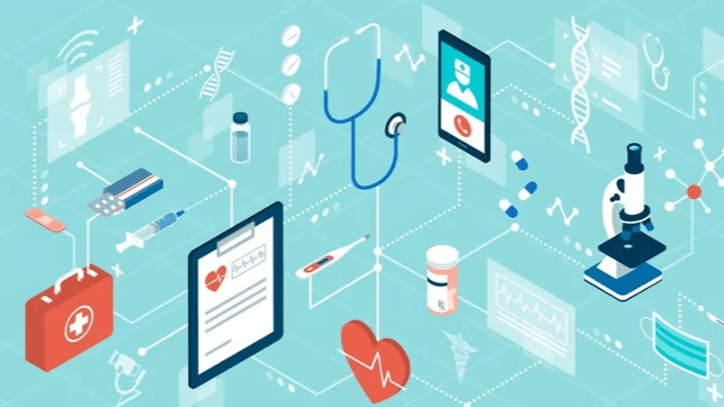The Benefits of Telehealth Services

Introduction
Telehealth services have rapidly transformed the healthcare landscape, offering patients and providers a new way to connect and communicate. As technology advances, telehealth has emerged as a vital tool for delivering medical care, especially in the wake of global events that have restricted in-person interactions. But what exactly makes telehealth so beneficial? In this detailed article, we’ll explore the wide-ranging advantages of telehealth services, highlighting how they enhance healthcare accessibility, improve patient outcomes, and offer cost-effective solutions.
Understanding Telehealth Services
Telehealth services encompass a broad spectrum of digital health practices that enable remote interaction between patients and healthcare providers. Utilizing technologies like video conferencing, mobile health apps, and remote monitoring tools, telehealth facilitates real-time communication and data sharing. This approach extends healthcare services beyond the traditional office visit, offering convenience and flexibility to both patients and providers.
Why Telehealth is Essential in Modern Healthcare
The integration of telehealth into modern healthcare systems is essential for several reasons. First, it addresses the growing demand for accessible healthcare, particularly in rural and underserved areas where medical resources are scarce. Second, telehealth supports continuity of care by allowing patients to maintain regular contact with their providers without the need for travel. Finally, it provides a critical solution during emergencies, such as pandemics, when physical distancing is necessary.
Convenience and Flexibility for Patients
One of the most significant benefits of telehealth services is the convenience it offers to patients. With telehealth, individuals can consult with their healthcare providers from the comfort of their own homes. This eliminates the need for travel, reduces waiting times, and allows for appointments to be scheduled at more convenient times. For those with busy schedules, mobility issues, or transportation challenges, telehealth provides a flexible alternative to traditional in-person visits.
Improved Access to Healthcare
Telehealth significantly improves access to healthcare, especially for individuals living in remote or underserved areas. In many regions, access to specialized care is limited by distance, with patients often required to travel long distances to see a specialist. Telehealth bridges this gap by connecting patients with healthcare providers regardless of geographic location. This increased accessibility is particularly beneficial for managing chronic conditions, where regular monitoring and consultation are essential.
Cost-Effectiveness of Telehealth Services
Another major advantage of telehealth is its cost-effectiveness. By reducing the need for physical infrastructure and minimizing overhead costs, telehealth can lower the overall cost of healthcare. Patients also save money by avoiding travel expenses and time away from work. Additionally, telehealth can prevent unnecessary hospital visits and readmissions by providing timely care and monitoring, ultimately reducing the financial burden on both patients and the healthcare system.
Enhanced Patient Engagement and Satisfaction
Telehealth fosters enhanced patient engagement by empowering individuals to take an active role in their healthcare. With easier access to their providers, patients are more likely to follow through with treatment plans, attend follow-up appointments, and seek advice when needed. This increased engagement leads to better health outcomes and higher patient satisfaction. Moreover, the personalized nature of telehealth services allows for more tailored care, which further enhances the patient experience.
Telehealth and Chronic Disease Management
Managing chronic diseases such as diabetes, hypertension, and heart disease requires consistent monitoring and regular check-ups. Telehealth services make it easier for patients to manage these conditions by providing continuous access to healthcare professionals. Through remote monitoring tools and teleconsultations, healthcare providers can track patients’ progress, adjust treatments as necessary, and intervene early if complications arise. This proactive approach can prevent the escalation of chronic conditions, leading to better long-term health outcomes.
The Role of Telehealth in Preventive Care
Preventive care is a critical component of maintaining overall health and well-being. Telehealth plays a significant role in promoting preventive care by facilitating regular screenings, health education, and early detection of potential health issues. Patients can easily schedule preventive services like annual check-ups, vaccinations, and wellness visits through telehealth platforms. This accessibility encourages more people to engage in preventive care, which can reduce the incidence of serious health conditions in the future.
Supporting Mental Health with Telehealth
Telehealth services have also proven to be invaluable in the realm of mental health care. The stigma surrounding mental health issues, coupled with a shortage of mental health professionals, often prevents individuals from seeking the help they need. Telehealth breaks down these barriers by providing a private and convenient way to access mental health services. Whether through video therapy sessions, online support groups, or mental health apps, telehealth offers flexible options for individuals to receive the care and support they require.
Telehealth in Pediatrics and Family Medicine
Telehealth is particularly beneficial in pediatrics and family medicine, where timely care and guidance are crucial. For parents, managing their children’s health can be challenging, especially when faced with sudden illnesses or concerns. Telehealth allows parents to consult with pediatricians from home, providing reassurance and advice without the need for an office visit. This can be especially helpful for common childhood issues like fevers, rashes, or behavioral concerns, where immediate guidance can prevent further complications.
Telehealth and Geriatric Care
For older adults, telehealth services offer a lifeline to medical care that might otherwise be difficult to access. Aging individuals often face mobility challenges, chronic conditions, and a higher risk of isolation, all of which can hinder their ability to receive timely healthcare. Telehealth provides a convenient way for seniors to maintain regular contact with their healthcare providers, manage their medications, and receive specialized care without the need for frequent travel. This ease of access can significantly improve the quality of life for older adults, allowing them to age in place with confidence.
Overcoming Barriers to Telehealth Adoption
Despite its many benefits, the adoption of telehealth services is not without challenges. Some patients may face technological barriers, such as a lack of access to reliable internet or unfamiliarity with digital devices. Additionally, there may be concerns about the quality of care received through telehealth compared to in-person visits. Healthcare providers and policymakers must work together to address these barriers by providing education, improving infrastructure, and ensuring that telehealth services are as effective and comprehensive as traditional care.
The Legal and Ethical Considerations of Telehealth
As telehealth continues to grow, legal and ethical considerations have come to the forefront. Issues such as patient privacy, data security, and the licensing of healthcare providers across state lines must be carefully managed. Ensuring that telehealth services comply with regulations such as the Health Insurance Portability and Accountability Act (HIPAA) is essential to maintaining patient trust and safeguarding sensitive information. Additionally, ethical guidelines must be established to ensure that telehealth practices prioritize patient well-being and provide equitable access to care.
Telehealth and the Future of Healthcare Delivery
The benefits of telehealth services are paving the way for a future where healthcare delivery is more integrated, efficient, and patient-centered. As technology continues to evolve, telehealth will likely become an increasingly standard component of healthcare. Innovations such as artificial intelligence, wearable health devices, and advanced telemonitoring tools will further enhance the capabilities of telehealth, offering more personalized and predictive care.
Telehealth’s Impact on Healthcare Providers
For healthcare providers, telehealth offers an opportunity to expand their reach and improve the quality of care they deliver. By reducing the time and resources required for in-person visits, providers can focus more on patient care and less on administrative tasks. Telehealth also allows for greater flexibility in scheduling, reducing burnout among healthcare professionals and enabling them to maintain a better work-life balance. Furthermore, telehealth can facilitate collaboration between providers, leading to more comprehensive and coordinated care for patients.
Telehealth and Public Health
From a public health perspective, telehealth services play a critical role in managing and mitigating widespread health issues. During outbreaks of infectious diseases, for example, telehealth can reduce the risk of transmission by minimizing the need for in-person consultations. Public health campaigns can also leverage telehealth platforms to disseminate information, track the spread of diseases, and provide remote support to affected populations. This ability to respond quickly and effectively to public health challenges is one of telehealth’s most significant contributions to society.
Telehealth and Health Equity
Telehealth has the potential to address health disparities by providing more equitable access to care. In underserved communities, where healthcare resources are limited, telehealth can offer an alternative means of receiving medical attention. By removing geographical and financial barriers, telehealth services can help ensure that all individuals, regardless of their location or socio-economic status, have access to quality healthcare. However, achieving health equity through telehealth requires targeted efforts to bridge the digital divide and ensure that all populations can benefit from these services.
Telehealth and Emergency Medicine
In emergency medicine, telehealth provides a critical tool for delivering timely care in situations where immediate physical access to a healthcare facility may not be possible. Through teleconsultations, emergency medical professionals can guide patients or first responders in providing initial care until help arrives. Telehealth can also facilitate rapid diagnosis and treatment decisions, which are essential in emergency situations. This capability can be life-saving, particularly in remote areas or during large-scale emergencies where healthcare resources are stretched thin.
Telehealth and the Global Healthcare Landscape
Globally, telehealth services are making a significant impact by extending healthcare access to regions where medical infrastructure is limited or non-existent. In developing countries, telehealth can connect local healthcare workers with specialists in other parts of the world, providing valuable expertise and support. This global reach not only improves health outcomes in underserved areas but also fosters international collaboration and knowledge sharing. As telehealth continues to expand, it will play an increasingly important role in addressing global health challenges and improving the overall health of populations worldwide.
Challenges and Opportunities for Telehealth
While the benefits of telehealth are substantial, the field also faces several challenges that must be addressed to fully realize its potential. Technological limitations, such as bandwidth issues and the availability of telehealth-compatible devices, can hinder the effectiveness of these services. Additionally, there is a need for ongoing research to evaluate the long-term outcomes of telehealth and to develop best practices for its implementation. Despite these challenges, the opportunities for telehealth to transform healthcare delivery are immense, and with continued innovation and investment, telehealth is poised to become a cornerstone of modern healthcare.
FAQs
What are the main benefits of telehealth services? Telehealth services offer numerous benefits, including increased accessibility to healthcare, convenience for patients, cost savings, and improved patient engagement and satisfaction. They also support chronic disease management, preventive care, and mental health services.
How does telehealth improve access to healthcare? Telehealth improves access by allowing patients to connect with healthcare providers remotely, regardless of geographic location. This is especially beneficial for individuals in rural or underserved areas where specialized care may not be readily available.
Is telehealth cost-effective? Yes, telehealth is cost-effective for both patients and providers. It reduces the need for physical infrastructure, lowers travel expenses, and can prevent unnecessary hospital visits, leading to overall savings in healthcare costs.
Can telehealth services be used for mental health care? Telehealth is highly effective for mental health care, offering private and convenient access to therapy, counseling, and support services. This can help reduce the stigma associated with seeking mental health care and make it more accessible to those in need.
What challenges do telehealth services face? Challenges include technological barriers, such as access to reliable internet, concerns about the quality of care compared to in-person visits, and legal and ethical considerations like patient privacy and data security.
How is telehealth shaping the future of healthcare? Telehealth is shaping the future of healthcare by making it more accessible, integrated, and patient-centered. Innovations in technology, such as AI and remote monitoring tools, are expected to further enhance telehealth services, making them a standard component of healthcare delivery.
Conclusion
Telehealth services represent a significant advancement in healthcare delivery, offering a wide range of benefits that are reshaping the way patients and providers interact. From increased accessibility and convenience to cost savings and improved health outcomes, the impact of telehealth is profound. As technology continues to evolve, telehealth will play an increasingly vital role in modern healthcare, ensuring that quality care is accessible to all, regardless of location or circumstance.





